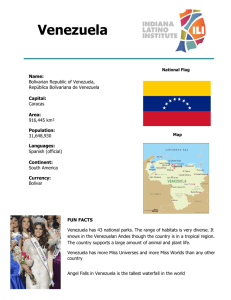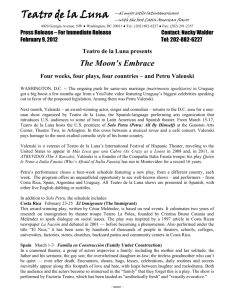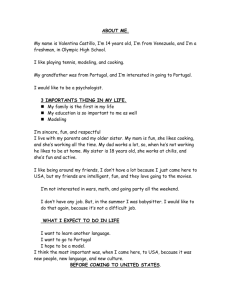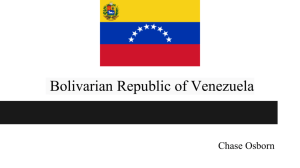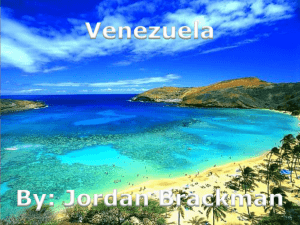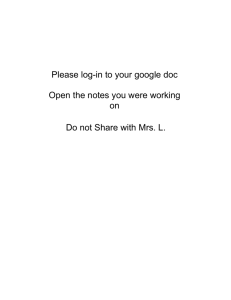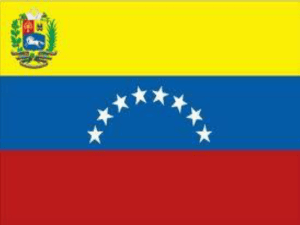Vocabulary and Translations
advertisement
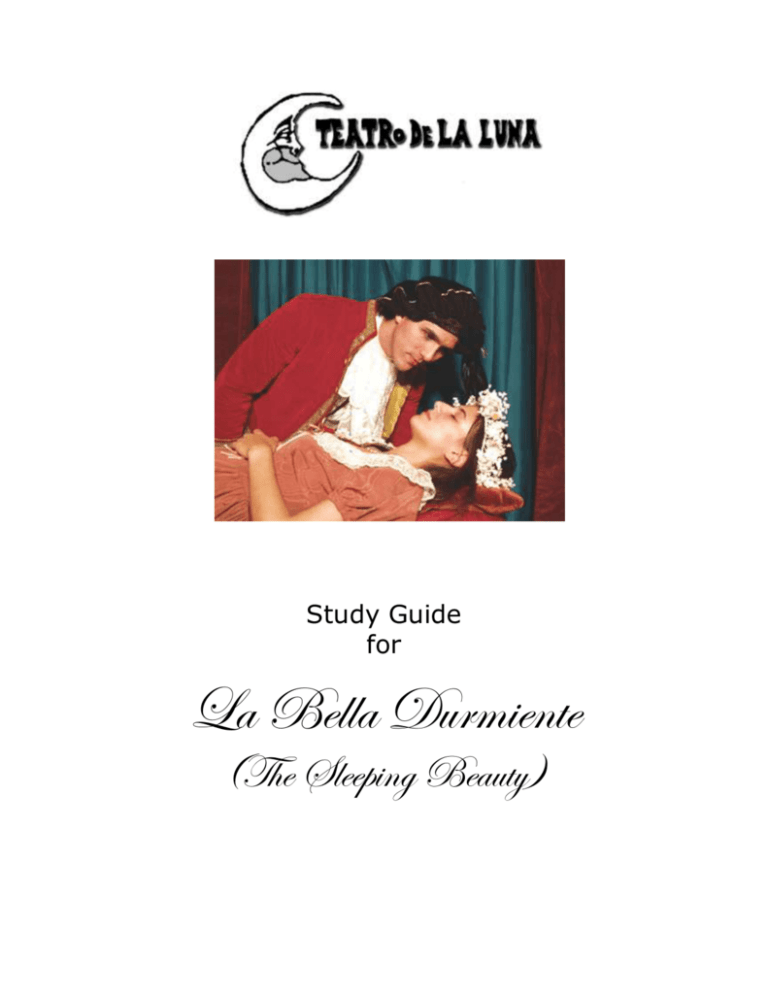
Study Guide for La Bella Durmiente (The Sleeping Beauty) Teatro de la Luna Experiencia Teatral/Experience Theater Study Guide La Bella Durmiente / The Sleeping Beauty Summary of the Play The Sleeping Beauty Once upon a time, a king and queen who were celebrating the birth of their little daughter invited all the fairies of the kingdom to a party, and they all brought lovely presents. But they forgot to invite one fairy and she got angry. She told them that when the Princess reached 15 years old, she would prick her finger on a spindle and die. But the baby’s godmother said the Princess would not die, she would only fall asleep, and would wake up when a Prince fell in love with her. When she reached 15, the Princess one day climbed up into a tower of the castle, where an old woman was spinning. The Princess wanted to learn how to weave …and so she pricked her finger with a sharp spindle. The Princess fell asleep, along with all her ladies and lords in waiting. Many years later, a Prince, who had heard the story of the Sleeping Princess, went towards the castle. When he saw the Princess he fell in love immediately and gave her a kiss. The Princess woke up, along with all her court. Happy at having broken the curse, they were married and lived surrounded by happiness and wonderful parties. Page 2 Teatro de la Luna Experiencia Teatral/Experience Theater Study Guide La Bella Durmiente / The Sleeping Beauty Vocabulary and Translations Personajes (Actores y Títeres) Heraldo (eh-RAHL-doe) Hada de la Bondad (AH-da day la bone-DAHD) Sirviente (seer-vee-EN-tay) Anciana (an-see-ON-ah) Rey (RAY) Paje (PA-hay) Reina (ray-EE-nah) Hada Oscura (AH-da ohs-COO-rah) Hada (AH-da) Príncipe (PREEN-see-pay) Hada de la Claridad (AH-da day la cla-ree-DAHD) Princesa Aurora (preen-SAY-sah auw-ROW-rah) Hada de la Alegría (AH-da day la ah-lay-GREE-ah) Characters (Actors and Puppets) Herald Good Fairy A person who makes announcements Who changes the curse on Aurora Servant Old Woman King Page Queen Evil Fairy The workers in the castle Whom Aurora finds spinning Aurora’s father A young servant Aurora’s mother Who puts the curse on Aurora Fairy Aurora has many fairy godmothers Prince Who wakes Aurora up with a kiss Fairy of Clarity One of Aurora’s fairy godmothers Princess Dawn The Sleeping Beauty Fairy of Happiness One of Aurora’s fairy godmothers Vocabulario Importante Important Vocabulary Pre-Kindergarten – 1st Grade año (AHN-yo) bella (BAY-yah) el día (el DEE-ah) durmiente (dur-me-N-tay) su hija (sue EE-hah) limpiar (limb-p-ARE) pero (PAY-row) year beauty the day sleeping his/her daughter to clean but 2nd – 3rd Grades Above Words Plus … cien años (see-N AHN-yohs) despierta (days-p-AIR-tah) estoy loco (s-TOY LOW-coh) la historia (lah ee-TORE-ee-ah) ¿Será niña? (sair-AH NEEN-yah) ¿Será niño? (sair-AH NEEN-yo) su majestad (sue mah-hais-TAHD) one hundred years wake up I’m crazy the story Will it be a girl? Will it be a boy? your majesty Page 3 Teatro de la Luna Experiencia Teatral/Experience Theater Study Guide La Bella Durmiente / The Sleeping Beauty 4th – 6th Grades Above Words Plus … una aguja (OO-nah ah-GOO-hah) un beso de amor (uun BAY-sow day ah-MORE) la espada de la verdad (lah s-PAH-dah day la vair-DAHD) el hechizo (el ai-CHEE-thow) un heredero (uun air-ray-DARE-oh) Ha nacido mi hija (ah nah-SEE-dow me EE-hah) morirás (more-ree-RAHS) Vocabulario de Teatro Autor (auw-TORE) Actor/Actriz a needle a kiss of love the sword of truth the curse an heir My daughter is born you will die Theater Vocabulary Playwright: The person who wrote the play. Actor/Actress: The men and women who play the parts onstage. (ahk-TORE/ahk-TREESTH) Coreografía de Fight Choreography: special steps and moves that actors use when Combate fighting onstage, either with hands or weapons. (core-ai-oh-grah-FEE-ah day comb-BAH-tay) Director (dee-reck-TORE) Director: The person who selects the actors and tells them where and what to do. Escena/Escenario/ Scene/Stage/Scenery: All words related to the stage. The scene is the Escenografía location where each part of a play takes place; the stage is the place (ai-SAIN-ah, where the actors work, and the scenery is what they act in front of. ai-sain-ARE-ee-oh, ai-sain-oh-grah-FEE-ah) Fotografía (foe-tow-grah-FEE-ah) Photography. Photos have to be taken of all shows – for publicity, for program covers, and for reminders. Maquillaje (mah-key-YA-hay) Makeup: All actors, both women and men, wear stage makeup to make them more visible from the audience. Musicalización Music Design: Selecting what music is used for the play. (moo-see-cah-lee-tha-see-OWN) Producción (pro-duke-see-OWN) Sonido (sow-NEE-doe) Production: The people who organize everything about the play, including who will direct it, who will design and build the set, and where the costumes come from. Sound: Not just music is used during a play; many times there are other sounds involved, too. Vestuario (ves-too-ARE-ee-oh) Costumes: What the actors wear to make them look different. Utilería (oo-teel-air-EE-ah) Properties: everything that an actor uses onstage (such as the Old Woman’s embroidery). Page 4 Teatro de la Luna Experiencia Teatral/Experience Theater Study Guide La Bella Durmiente / The Sleeping Beauty Pre-Performance Activities For Grades PreK-1: 1. Spanish Language: Go over vocabulary. Ask students what things are “bella” (or “bello” if it’s masculine). When it’s time to clean up, say, “¡A limpiar, a limpiar!” (“To clean, to clean!”) for a week before the show. Encourage students to join in as they’re tidying up. 2. Art: Have students color Aurora’s bed. Encourage them to decorate the curtains, rug and bedding. Suggest they draw her favorite dog where they think the dog would sleep. 3. Literature/Listening: Read the Sleeping Beauty translation. How many students already know this story? How is this version different? 4. Geography: The person who wrote and directed the play was born in Venezuela. Show students the maps of Venezuela and Florida. How far apart are they on a globe? Do people speak different languages in the two places? How are they alike? Ask students where their families are from. Using the blank world map, ask them to color in the country their families come from. 5. Biography: Using the biographical sketch of Jacqueline Briceño, tell students a little about her. Ask if they think they’d like to meet her, and what they like, or don’t like, about her. 6. Memory Work: Ask students about prior theatrical experiences. Has Teatro de la Luna been to your school before? Do students remember any previous shows we’ve presented? 7. Social Interaction: Discuss the proper way to behave in a theater with students. For Grades 2-3: 1. Spanish Language: Go over vocabulary. Have students pronounce the words in Spanish and English. Refer to each day’s line leader as “su majestad”. Incorporate some of the words or phrases into everyday vocabulary with the class, making it a ‘secret language’. 2. Geography/Culture: La Bella Durmiente / The Sleeping Beauty was adapted by a Venezuelan who now lives in Florida. Show where Venezuela is on a map. Compare its size with the United States. Ask students to find Florida in the United States. How far from Venezuela is it? Discuss some of the differences between Hispanic and American cultures. Use the Venezuela fact sheet for quick references. 3. Art/Architecture: Using shoe and cereal boxes have students create an entire castle complex. Where would Princess Aurora’s bedroom be? How would the Prince enter the castle? Where would the Old Woman be? 4. Biography/Literature/Writing: Read the biographical sketch of Jacqueline Briceño to students, or have them read it themselves. Ask students to write a one-paragraph story about Ms. Briceño: Maybe they travel from Venezuela with her. Maybe they meet her as a teacher. Maybe they act in one of her plays. 5. Literature/Reading: Read the story of The Sleeping Beauty in class. If you are in an immersion school, you may read it in Spanish. Discuss how the version you read is different from any other versions the students know. 6. History: Using Ms. Briceño’s biography, ask students to research the year she was born, either on a computer or in the library. What kind of clothes did people wear then? What toys were popular? Was television invented yet? What programs did people watch? What songs were popular? What movies came out that year? Did anything really important happen that year? For Grades 4-6: 1. Spanish Language: Go over vocabulary. Have students learn the theatrical terms in Spanish. 2. Literature/Reading: Have students read the play’s program in Spanish. Do they recognize some words? Are some words similar to English? Have them describe the storyline from memory. Do any Page 5 Teatro de la Luna Experiencia Teatral/Experience Theater Study Guide La Bella Durmiente / The Sleeping Beauty 3. 4. 5. 6. 7. students know different versions of Sleeping Beauty? Discuss how folk tales and fairy tales change over time. Art: The play takes place in medieval times. Draw what costumes you think Aurora, the Prince or the Evil Fairy should wear. What does the Prince’s sword look like? Geography/Culture: The playwright is from Venezuela, and currently lives in Florida. Give students copies of the Geographical Fact Sheet on Venezuela. Ask students to find Venezuela on a map or globe. Discuss how its location may affect the weather and culture. What are typical Venezuelan dishes? If time permits, have students work together to create a special Venezuelan meal. Discuss some differences between Venezuelan and American cultures. How far is it from Florida? Have them research how long it would take to fly from Venezuela to Florida. Language/Reading/Literature: If your class is bilingual, have them read the play out loud in Spanish, revolving roles so everyone in class gets a chance to read. If there are words students don’t understand, explain them or ask students to look them up. Biography: Have students read the playwright’s biographical sketch. How old do students think she is? Is she older or younger than their parents? History/Culture: Using the playwright’s biography, have students find other historical events that took place during the playwright’s life. Create a large, detailed timeline of the playwright’s life, letting students add the information they find. Post Performance Activities For Grades PreK-1: 1. Critical Thinking: Was La Bella Durmiente like students thought it would be? How was it different from other versions students know? How was it the same? 2. Art/Writing: Draw a character from the play. Practice writing that character’s name. 3. Social Interaction/Language/Writing: Ask class to agree on a favorite character. Compose a class letter to that character. Have students sign their own names. (If you do this activity, Teatro de la Luna would love to receive your letter!) For Grades 2-3: 1. Critical Thinking: Discuss how this play was different from the version of the story that students know. How was it the same? How did the actors play different parts onstage? Were some roles more successful than others? What parts of the play did students like the best? 2. Literature/Writing: What is the play about? What does each character want in the play? 3. Writing: Ask students to write a paragraph about the story as though they were one of the characters. Ask the students to write a letter to their favorite character. 4. Art/Writing: Ask students to draw a scene from the play and write a description of the scene. (If you do this activity, Teatro de la Luna would love to receive copies of the artwork!) For Grades 4-6: 1. Critical Thinking/Literature: Discuss how the play differed from what students thought it would be like, and how it was the same. Did the actors add to or subtract from the written characters? Were the costumes similar to those the students created? 2. Writing: Ask students to pretend they are one of the characters from the play and write a short paragraph, as that person, about their feelings for another character. 3. Art: Have students design their own puppets or masks that could be used in the play. Construction ideas for puppets: use toilet tissue cores, small (empty) boxes cut in half through 3 sides, or old socks. For masks, use white paper plates. Page 6 Teatro de la Luna Experiencia Teatral/Experience Theater Study Guide La Bella Durmiente / The Sleeping Beauty Venezuela Venezuela is in the northern part of South America. As you can see in the map, its neighbors are Colombia to the west, Brazil to the south, and Guyana to the east. Venezuela is a little bit bigger than two Californias put together. Its capital is Caracas. It has South America’s largest lake (the Maracaibo) and third largest river (the Río Orinoco), the world’s highest waterfall (Angel Falls) and the longest snake in the world. You’ll also find jaguars and armadillos. The northern part of the Andes mountain range ends in western Venezuela, and part of the Amazon jungle is in the south of Venezuela. season. year. The country’s climate is mainly tropical, with a temperate zone along the coast. Venezuela has a dry season and a wet Its Dry Season goes from December to April, and the West Season is the rest of the People have settled in Venezuela from many different countries. People have come from Spain, Italy, Portugal, Arabia, Germany and Africa. There are also many native peoples in Venezuela. Although Spanish is the official language, many people speak their own languages or dialects. Over 25,000,000 people live in Venezuela, and more than 93% of the adults can read and write. The capital of Caracas has a population of 4,600,000. Venezuela won its independence from Spain on July 5, 1811, so it celebrates its Independence Day the day after the USA does. Possibly Venezuela’s most popular cultural event is music, which is a blend of European, African and native rhythms. Theater is becoming more popular. There are also more books being written in and about Venezuela. Venezuelan snacks and dishes (referred to as comida criolla) are mainly pancakes, chicken, pork, beef, soups and stews. Local specialties include empanadas (deep-fried cornmeal turnovers with fillings of ground meat, cheese, beans or baby shark) and pabellón criollo (Venezuela's national dish, which is made of shredded beef, rice, black beans, cheese and fried plantain). Information for this page came from: the CIA World Fact Book, website www.cia.gov/cia/publications/factbook/geos/ve.html the Lonely Planet World Guide website www.lonelyplanet.com/destinations/south_america/venezuela/index.htm Page 7 Teatro de la Luna Experiencia Teatral/Experience Theater Study Guide La Bella Durmiente / The Sleeping Beauty Jacqueline Briceño Playwright, Director and Actor Ms. Briceño was born and grew up in Venezuela. She began acting in 1973, when she joined the University Theater children’s theater group at the University of Carabobo in Venezuela. She stayed there for ten years. After a few years, she became more interested in other parts of theater. She learned about producing, directing, working with music and working with children. Finally, she took over the direction of the Academy of Children’s Theater for more than twelve years! During that time, Ms. Briceño took part in more than 40 shows that included classical theater, Spanish theater and children’s theater. She won many awards for her work. In 1997, Ms. Briceño moved to Miami, Florida. She started the Miami Children’s Theatre. The Miami Children’s Theatre was invited to bring a show to Teatro de la Luna’s International Festival of Hispanic Theater, where she first met the people from Teatro de la Luna. Since then, she has come back to create three shows for Teatro de la Luna’s Experience Theater program. Besides La Bella Durmiente (The Sleeping Beauty), Ms. Briceño also wrote and directed Hansel y Gretel (Hansel and Gretel) and Las Aventuras de Pinocho (The Adventures of Pinocchio). Jacqueline Briceño still lives in Miami. She has a young boy now, who is learning in both English and Spanish. Page 8 Teatro de la Luna Experiencia Teatral/Experience Theater Study Guide La Bella Durmiente / The Sleeping Beauty A Short History of The Sleeping Beauty The Sleeping Beauty is a very old story. There have been versions found in Russia, Italy, France, Germany, England and throughout the world. The oldest version we have is from 13th century Italy. It was called Sun, Moon and Talia. It was not a story for children, but can be read by interested adults in The Uses of Enchantment by Bruno Bettleheim, and can also be found online. Charles Perrault, the French writer who lived in the 17th century, gathered many fairy tales together. Some of the most famous ones include Cinderella and Little Red Riding Hood. He also found a version of The Sleeping Beauty, which contains some of the earlier story of Sun, Moon and Talia and the more modern version we know better. Perrault’s Princess, after marrying her Prince, has two children and is terrorized by her Mother-in-Law, who happens to be an ogress. The adaptation we know the best was written down by The Brothers Grimm in Germany in the 1800s. This one ends with the Prince waking the Princess with a kiss and then marrying her. Most students will be familiar with the Walt Disney movie. Other variations include the 19th century ballet, with music by Tchaikovsky. Every writer brings differing ideas to Sleeping Beauty, and differing areas of importance. Some people say that Sleeping Beauty is the story of the end of childhood. Some say it is about self-discovery; the curse that turns into a joy. To some it is even a story based on religion. Whatever you believe, the main theme is the destruction of evil by good; the young fairy is not able to do away with the evil fairy’s curse, but changes it to good. The Prince’s search for happiness changes to good as he discovers the Princess. The Princess’s sleep is overcome by love’s kiss. Page 9
